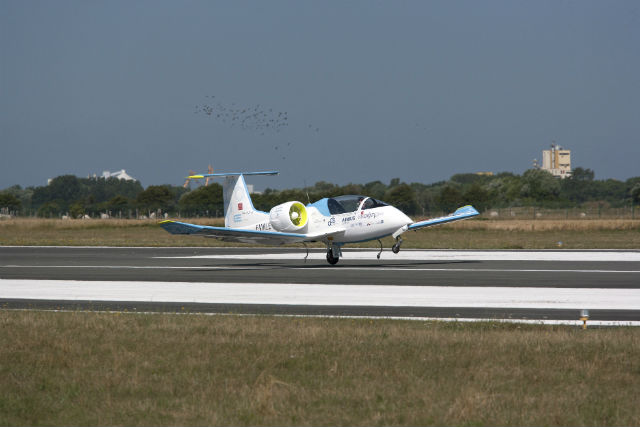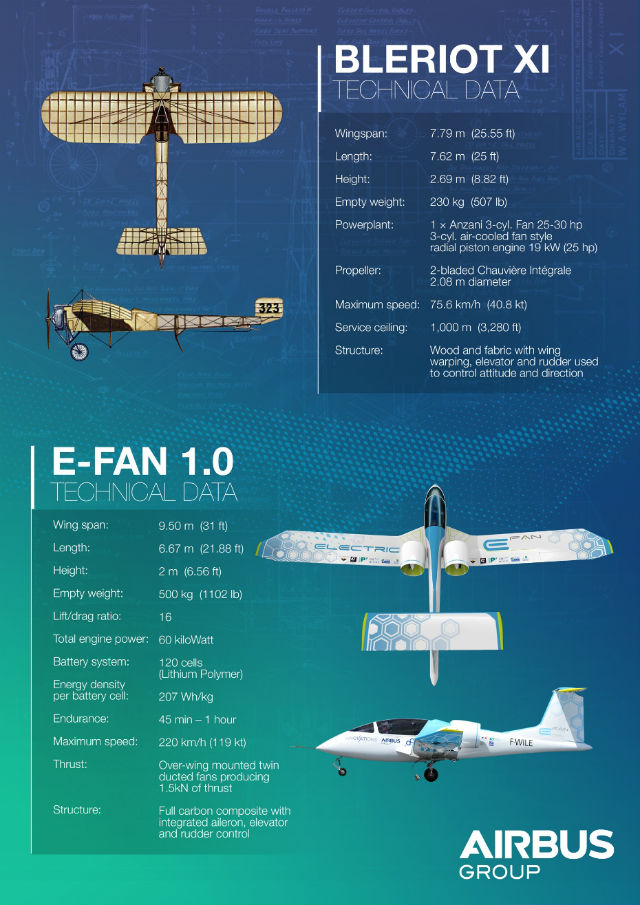Airbus this morning claimed a historic second, by crossing the English Channel with a “twin-engine electric plane taking off by its own power”. The company’s all-electric e-Fan demonstrator – which flew at the Paris air show in June – made the 40nm (74km) crossing from Lydd to Calais in about 37min.
But the aerospace industry giant was pipped to the first electric prize by French stunt pilot Hugues Duval, who the evening before “got the [electric crossing] ball rolling” by flying his diminutive all-electric Cri-Cri from Dover to Calais, a 17min crossing.
A third attempt to make a first electric crossing, with an Alpha Electro aircraft by French maker Pipistrel, was grounded at the 11th hour with withdrawal of the electric motor by its supplier, Siemens – which is also a partner to Airbus’s e-Fan project. Pipistrel, whose aircraft was being readied for the record attempt by a French distributor, issued a statement saying that Siemens had warned it off the attempt, claiming the motor that had not be designed for flight over water, and went on to demand return of the motor, threatening legal action to stop the flight.
Siemens in a statement says it “always” likes to support electric flight but “would never put its own safety demands aside”, adding that there had been no agreement between it and Pipistrel regarding the cross-Channel attempt.
According to Pipistrel, the Alpha Electro is available to order for delivery “soon”, although it added: “but maybe not with a Siemens motor anymore”.
Airbus, meanwhile, described its bid to be first as a “homage” to Louis Blériot, who made the first powered aerial Channel crossing in 1909, in the opposite direction. But while the Airbus team may have been surprised to find itself facing competition (as Blériot did), e-Fan’s flight was accompanied by little of the pioneering era’s anxiety about whether or not it would succeed; more than a century of aircraft development and extensive testing of e-Fan – not to mention modern meteorology – put paid to that.
Pilot Didier Esteyne was also probably more comfortable than Blériot, being encapsulated in a modern canopy and with the assurance of radio contact with the ground. However, in the event, today’s flight bore one surprising similarity to Blériot’s: time. Blériot was aloft, at a maximum of about 230ft above the sea, for 36min 30s, apparently a bit quicker than Esteyne, whose altitude reached about 3,280ft.
Claims by either Duval or Airbus to being first will in any case rely on definition of the feat. Both crossed the Channel using aircraft driven by battery-powered electric motors, but neither made the first electric-powered crossing.
That distinction goes to another pioneer, Paul MacCready, whose solar-powered Solar Challenger in 1981 set the then-world record for the highest, farthest and longest solar-powered manned flight, with a 141nm, 5h 23min trip from Corneille-en-Verin airport, north of Paris, across the Channel to RAF Manston.
In any case, Duval wins a prize for grace; following his arrival in Calais, he said it was with “great anticipation that we await the feat of e-Fan”. To Esteyne, he added: “Good luck!”

e-Fan landing at Calais
Airbus

Airbus
Source: FlightGlobal.com













